
Science in Hinduism-Lokas, Black Holes, milky way
This is in continuation with the rest of the series SCIENCE IN HINDUISM. Till previous article, we saw creation of this universe, various living and non-living entities, types of lord Vishnu and structure of universe and its various planets. If you haven’t gone through these articles, then please find the link below for the respective articles.
Science in hinduism-Extraction-Contraction and creation of universe
Science in Hinduism-Creation of universe and its being
Science in Hinduism-Creation of Humans and third type of lord vishnu
Science in Hinduism-Structure of universe and various planets
In previous article, we saw various planetary systems of the upper lokas. In this article, we shall see the remaining planetary systems of our universe including our solar system and its planets. Let us start with the loka next to maharloka.
Dhruv-Loka
This loka is like the complex planetary revolving around the Polestar (Dhruv Tara). Polestar is said to exist some 10,000,000 yojanas below the Maharloka.
I guess you understood why polestar is called as dhruv tara in hindi and Sanskrit?
According to srimad bhagvatam, this loka exist at the center, surrounded by bright ring of stars. So, from what I have studied from science, I can refer this bright ring of stars as our galaxy Milky Way.
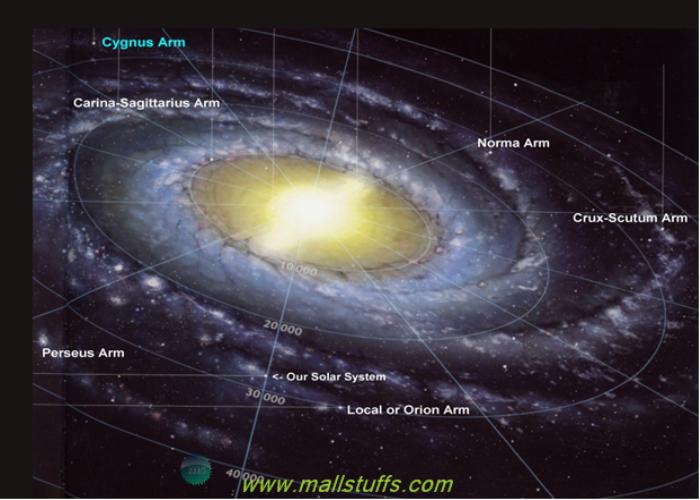
From the above scientific image we can refer the middle shining portion as Dhruv-Loka and as we see above, it is surrounded by bright rings of stars including our solar system.
Here I would like to bring forth the notion that we have the wealth of information hidden in our ancient religious scriptures, in forms of riddles. Instead of trying to research everything through science, Indian scientists should be digging more on our ancient religious scriptures and then use scientific theories and experiments to validate those concepts and hence, would find it easier to research further on those concepts.
Having said that Let us come back to the topic!!!
As I have repeatedly said in my previous articles, there are millions of material universe and in every material universe, there is one planet named Vaikuntha, filled with an ocean of milk. This planet is the dwelling place of our Lord Vishnu who rests on an island named Shvetadvipa. In case of our Universe, the abode of Lord Kshirodakshayi Vishnu, Vaikuntha, is said to be situated on the Eastern side of Dhruvaloka.
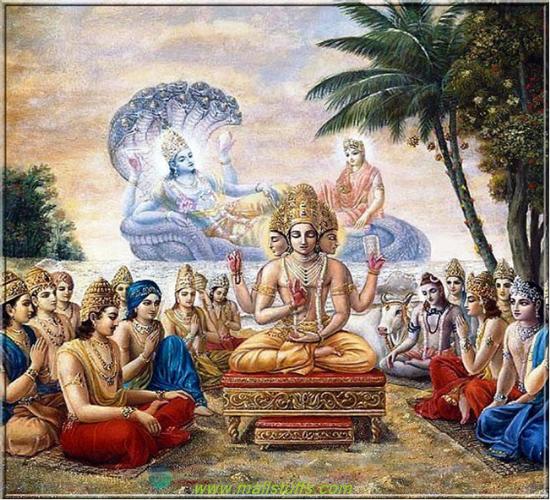
Brahma and demigods meditating at Shvet-dvipa in Dhruv Loka
Area of this transcendental island is said to be of 200,000 square miles and covered with desire trees for the pleasure and luxuries of the Supreme Lord, who stay here with Goddess (Devi) Lakshmi and other immaculate, transcendental entities.
Just imagine the beauty of this planet. Just a figment of this imagination makes me more enchanted towards my supreme lord.
Since this is a spiritual planet, it is eternal and remains undestroyed even when all the other planets within the material universes are destroyed, by the courtesy of lord Shiva. As said before, this planet is the center of all material stars and planets. So, if you think that only planets like earth, mars, Venus etc revolves around the sun and sun is stationary, then you are wrong. Even the sun has motion and it revolves around this dhruv loka (Galactic core). Even modern scientific theories and scientists have validated this phenomenon.
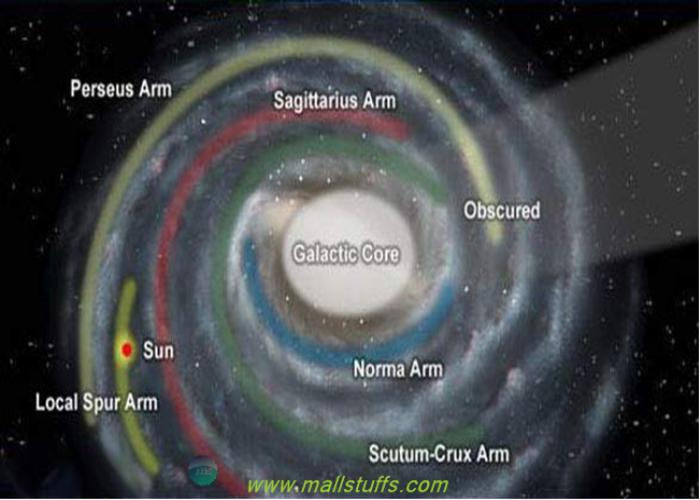
Sun and other solar system revolving around the galactic core (Dhruv-Loka)
Here I would like to share one of my experiences. Around nine years ago when I was in 12th, I read the article in newspaper where one of the western philosopher (I don’t remember the name) was mocking on Hinduism scriptures where there was mention of sun god riding on his chariot. So now when the science has confirmed the motion of sun revolving around Galactic core, possibility of sun being the demi-god, riding on his chariot continuously has increased and So now, I feel like mocking that philosopher with the below image.

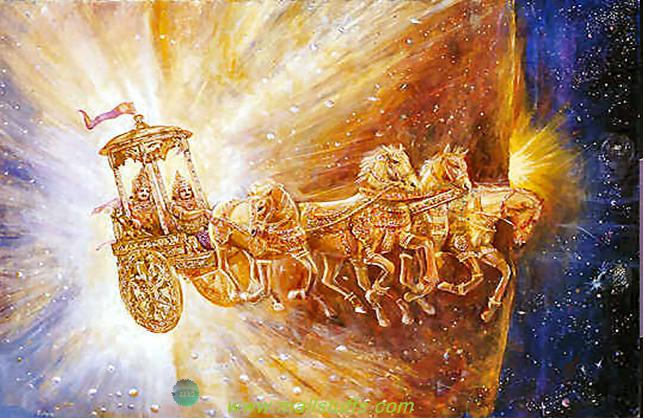
Demi-God Surya (sun) riding on his chariot of seven divine horses
According to srimad bhagvatam, Sun revolves at the speed of 16,000 miles/second around the galactic core (Dhruvaloka)
Srimad bhagvatam also says that there is an area of an immense gravitational power and Energy all around dhruv-Loka. So, can you guess what the scientific term of these powerful areas is?
Well science calls these powerful areas of great gravitational force as black holes. srimad bhagvtam states further that the Black Hole is the connecting point between the Physical and Spiritual Realms. This means that all the objects attracted by black holes reach the abode of lord Vishnu (dhruv-loka). Even the pure soul who liberates from the material world (Moksha) goes to abode of lord vishnu through these black holes.

Black holes
Having seen enough of dhruv lokas, let us go through our next lokas
Sapta-rishi Loka
This loka is located 100,000 Yojanas below the Dhruva-Loka and is abode of the Seven Great sages.
These seven great sages (rishis) are spiritually the most advanced guides for Humanity and co-exist at all major time periods of our History. If we look from the astronomical aspect, then their abode can be acknowledged as Ursa Major constellation or Big Dipper and like the solar system, it also always revolves around the Pole Star(Dhruv-Loka).

Sapta-rishi Loka revolves around the Pole Star
To further confirm the above claims, take the example of rishi(Sage) Vasishth and rishi(sage) Vishwamitra who are two of the seven great rishi(sages).
Vishwamitra was the guru of Lord Rama while Rishi Vasishth was the preceptor of the Solar Dynasty or Suryavansh. Ancient scriptures like Ramayana, Mahabharata and puranas are full of legends and stories which exhibits extraordinary services rendered by these rishis to different rulers on our planet since the inception of time.
Nakshtara-Loka
This loka is located near the major neighborhood of the Solar System, seen as the starry sky at night. It is generally representated as the Zodiac Map around the Earth and symbolizes the various constellations visible to us from Earth.
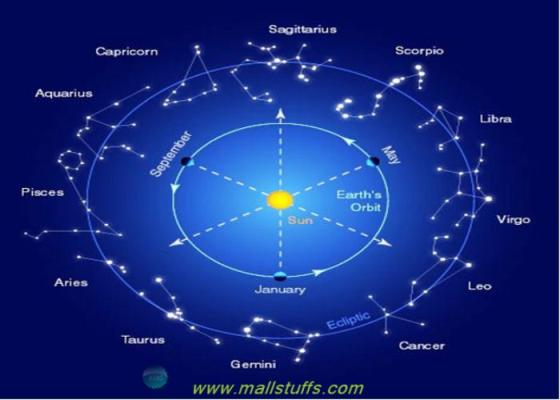
Nakshatra-Mandal
According to Hinduism, position of the planets inside this nakshatra lokas plays an important role in determining the incidents and future of any individual’s life.
Astronomically, Nakshtara-Loka is equivalent to the scientific Lagoon Nebula. As shown in the image below, Lagoon Nebula, is the buzzing star factory on the right, and its diminutive counterpart on the left is NGC 6559
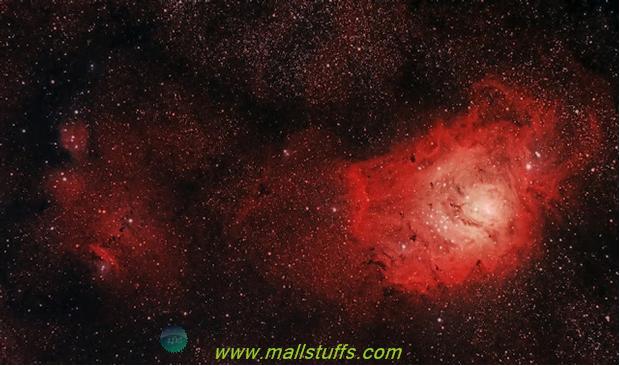
Lokas of Solar Planets
The next Lokas are lokas of the major planets of our solar system viz. Saturn, Jupiter, Mars, Venus ,Mercury and which are the residence of the divine-beings called Shanaichar, Brihaspati, Mangal,
Shukra ,Budh and respectively
.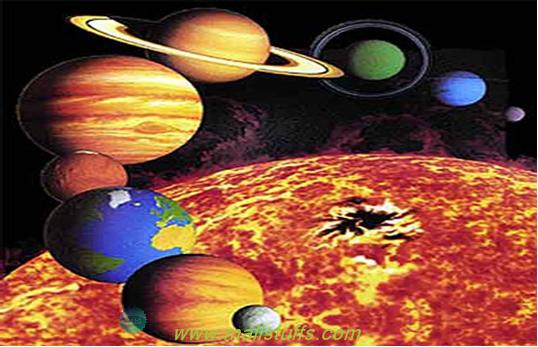
The Lokas of Solar Planets
According to srimag bhagvatam, these solar planets are spherical shell regions situated one after the other in the order of Mercury, Venus, Mars, Jupiter and Saturn. These lokas are said to be situated at a respective distance of 2, 00,000 Yojanas each.
Surya-Loka
We already know about surya loka as the abode of demi-god surya (Sun). Surya-Loka refers to the sphere of the Sun-god and its solar neighborhood.

Surya-Loka represents the center of our Universe
The most important thing about this Loka is that it is located in the middle of Bhuloka and the Bhuvarloka, rotating through the time circle of the zodiac (nakshatra loka as discussed above). Thus, it represents not only the center of our Solar System, but also the center of our Universe.
This loka is situated at a height of 1, 00,000 Yojanas above the Earth.
In science, you may have learned that that the whole universe is expanding all around us, so it may be true that our Solar System lies in the central portion of the Egg-shaped Universe we exist in.
Science has not advanced enough to measure the distance of the universe. So, it is very difficult to determine the real space structure of the universe. Hence, the astronomers/Scientist has to analyse map of redshifts and directions in the sky from where the light comes. They have to then assume the Hubble law to get the distance till the source galaxy. Because of too much of assumptions, the derived result will not be precise.
Chandra-Loka
Chandra/Soma is the Sanskrit abbreviation of the Moon-demigod and hence, this Loka includes the satellite of Moon as well as its orbital neighborhood.
Please note that when the scriptures talk about the Sun or Moon as demi gods, you should not imply the Star and Satellite as Gods. According to scriptures, Sun and moon are deities who have been given the duty of handling their respective heavenly body and hence, these deities are the ones who should be revered and not the material entities like sun or moon.
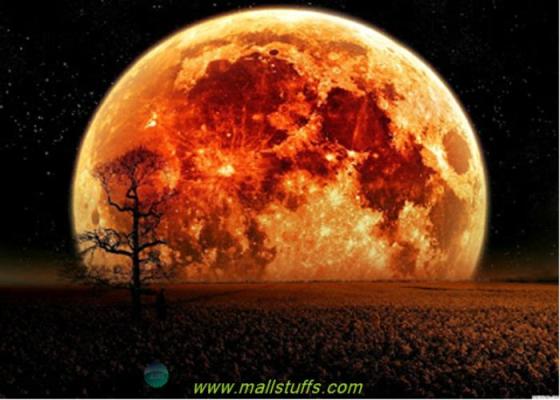
Chandra-Loka, abode of the Moon-god
Since the moon influences the tidal processions and growth of vegetation, it is rightly considered as the life-giver for all living beings on earth.
Soma is also known as intoxicating beverage which is consumed by Indra(Demi-God of heaven) and other deities especially when they are preparing themselves for a battle against the demons.
Rahu
Rahu is the North node of the Moon's orbit while its counterpart Ketu is exactly on the southern node. Rahu, situated around 80,000 miles above previous three Lokas and is accountable for causing the Lunar and Solar eclipses.
If we look into astronomical aspect then Rahu and Ketu is considered as the Ascending and Descending Nodes of the Moon which are the focal point of the intersection of orbits of Sun and Moon and if the alignment is perfect, either a Solar or Lunar eclipse occur.

Rahu and Ketu as Nodes of the lunar orbit
According to puranic stories, during the Samudra manthan (churning of the ocean) , the asura Rahu and ketu drank some of the divine nectar. Sun and moon realized it and they alerted Mohini (the female avatar of Vishnu ). Before the nectar pass his throat, Mohini beheaded him. The head, however, remained immortal. It is believed that this immortal head lie on either side of the moon to occasionally swallow the sun or the moon, causing eclipses.
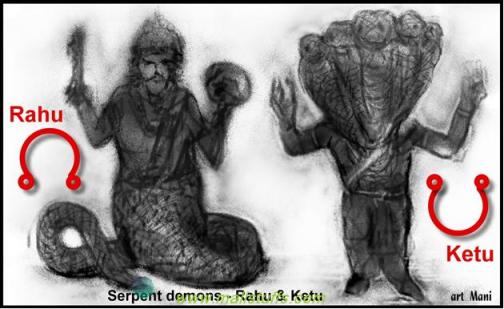
We will see the remaining lokas with their relation to science in our next article
Around 10,000000 yojanas below maharloka,
Lies the complex planetary named dhruvloka.
On its eastern side lies planet vaikuntha,
Lord resting on its island called shvetadipa.
When all other planets face extreme tremble
Dhruvloka remains clam and forever stable
Whole universe revolves around Dhruvloka
Pure souls traverse here to attain moksha
Next loka is the abode of seven great sages
Advanced spiritual guides in all human phases
Ancient scriptures are full of their chorus
Extraordinary service made their king glorious
Neighbourhoods of solar system next loka lie
From earth it looks like starry night sky
Position of its planet plays an important role
Determines the future of every living soul
Next lokas contains planet of our solar system
Sun, moon, mars, venus etc are just few of them
Position of rahu and ketu are dangerous of all
Lunar and solar eclipses - their destructive call
Note: Images used on this website
are either a production of Bhaktivedanta Book Trust(https://www.krishna.com), Iskcon
Foundation or were found in google search under "Free to use and share". If any
of the images presented here violates copyright issues or infringes anyone copyright
or are not under "Fair use", then please bring it to our notice. Read
Disclaimer for more.
Share this to your friends. One of your friend is
waiting for your share.
Related Articles
Science in Hinduism-Gravitational force and repulsive force
That is the way i like you
No violence against animal in hinduism
Living in an illusionist world-Part 2
Meaning and significance of Swastika-Hinduism sacred symbol
Why Diwali is celebrated and what it teaches us
Visit to isckon temple
Is lord ganesha God and worthy of worship
Living in an illusionist world-Part 1
Why lord Ganesha have elephant head
Post Comment